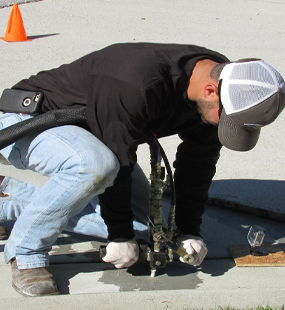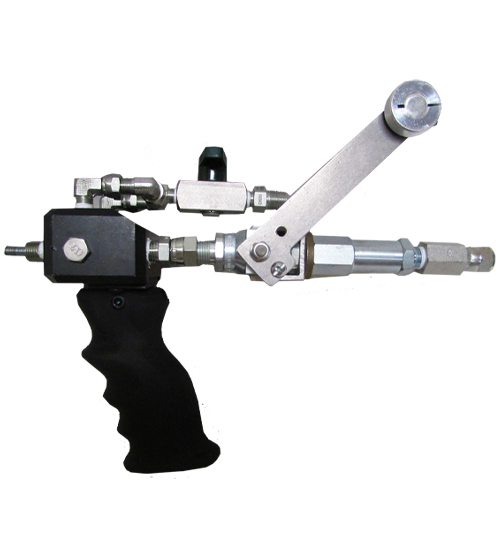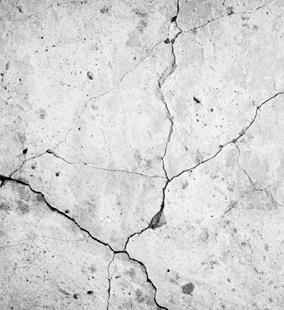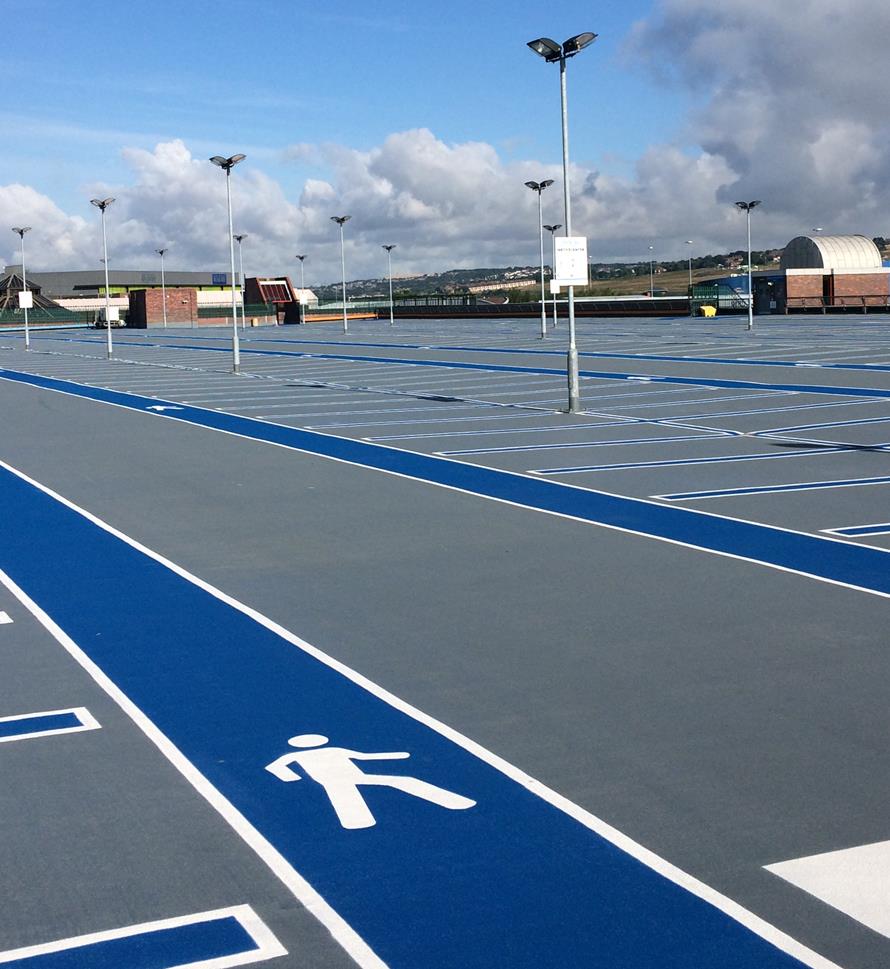
- Home
-
Solutions
-
Leak Seal
Seal leaks in concrete or masonry with crack injection and curtain grouting of our Prime Flex polyurethanes and AR acrylate resins. Prime Resins offers superior solutions for stopping leaks in every type of environment.
Read More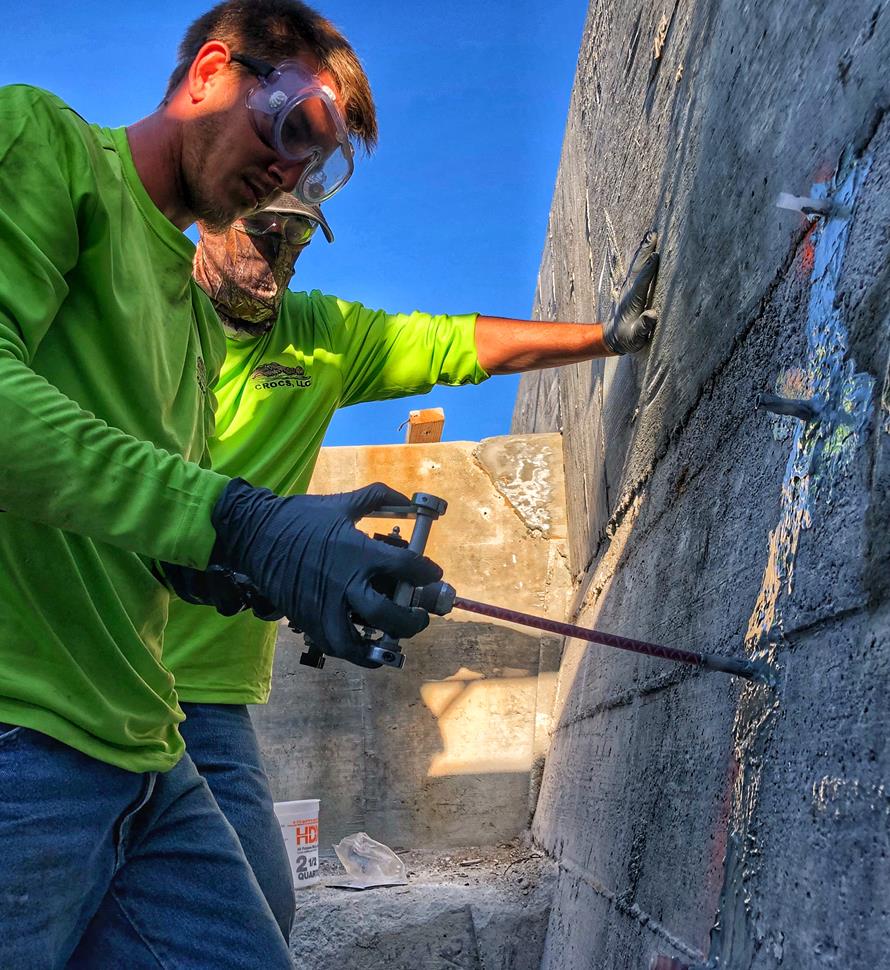
-
Soil Stabilization
Sound concrete relies on a sound substrate. Stabilize soils and fill voids with our polyurethane and acrylate foams and gels. We make chemical grouts for permeation and compaction grouting in wet and dry conditions.
Read More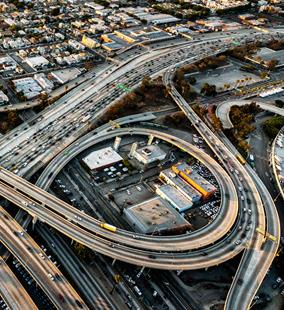
-
Slab Lifting & Stabilization
Slab lifting and slab stabilization with polyurethane foams offers many advantages over traditional mudjacking. Only Precision Lift is engineered to tackle underlying issues and slab lifting with precise, dependable results.
Read More
-
Floor Repair & Joint Protection
Spalled concrete is concrete that is chipped, cracked and deteriorating. This often happens at a joint.
Read More
-
Seawall Repair
You can repair a seawall or bulkhead with Prime Resins chemical grouts: fill voids, stabilize loose soil and seal leaks at a fraction of the cost of wall replacement.
Read More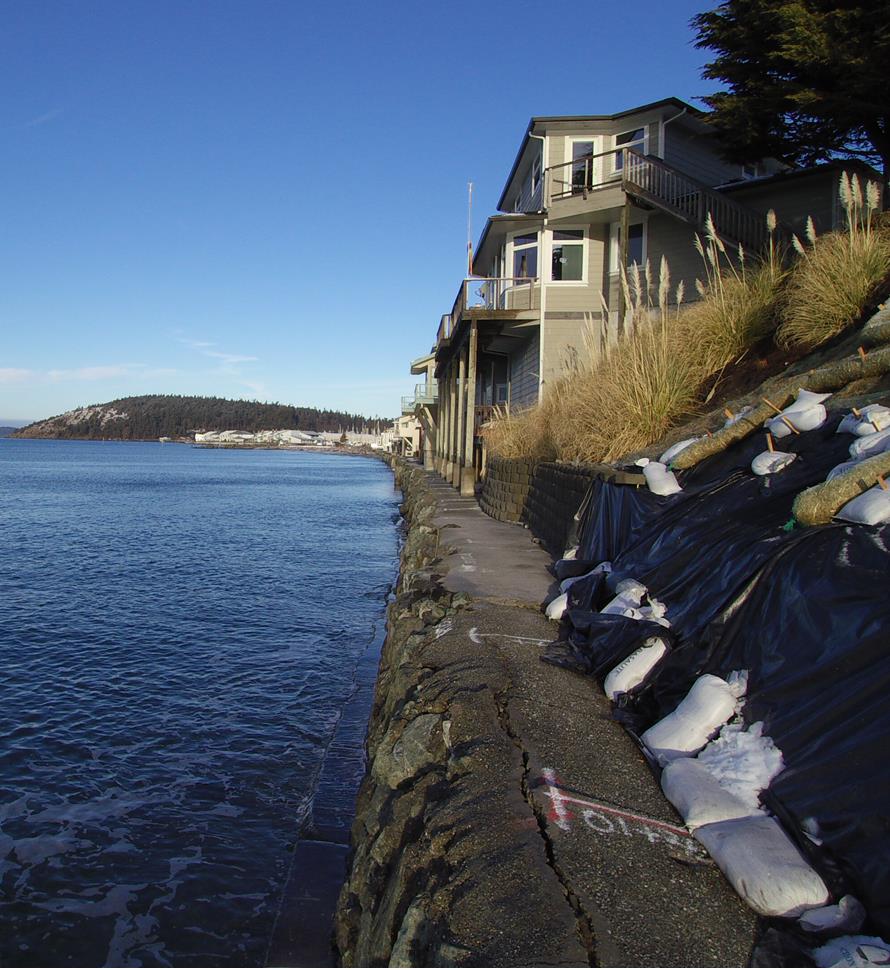
-
Structural Repair / Bonding & Anchoring
The need for crack repair in concrete structures can be caused by many different factors. Damage can occur to the concrete in situations where direct impact puts stress on one area of the structure.
Read More
-
Highway & Bridge
The geotechnical needs of DOTs and other agencies responsible for roads and bridges are vast. Issues include: Culvert repair Soil stabilization Void filling Concrete slab lifting Sinkhole remediation Slope control Slough control in tunneling
Read More
-
Waterproofing & Secondary Containment
Protecting concrete usually means shielding it from the elements of nature or from harsh manmade chemicals. But it’s not just concrete that needs such protection. Corrugated metal pipe, steel surfaces, material hoppers, rail cars and masonry all can come in contact with corrosive or abrasive materials or harsh conditions.
Read More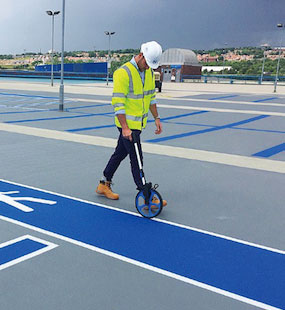
-
Leak Seal
-
Products
-
Leak Repair
- AR 800
- Conduit Seal Kit
- PR10L ACLM
- Soakum Oakum Kit
- Prime Flex 900 XLV
- Prime Flex 910
- Prime Flex 920
- Prime Flex 940
- Prime Flex 985 LX10
- Prime Flex 985 LX20
- Prime Flex 985 5.0
- Prime Flex 985 5.0 Fast
- Prime Flex Hydro Gel™ SX
- Prime Plug 1, 2 & 3
- PrimeCem MSM
- PrimeCem CAM
- PR10 ACLM (granular)
- Prime Flex Hydro Gel™ EXP
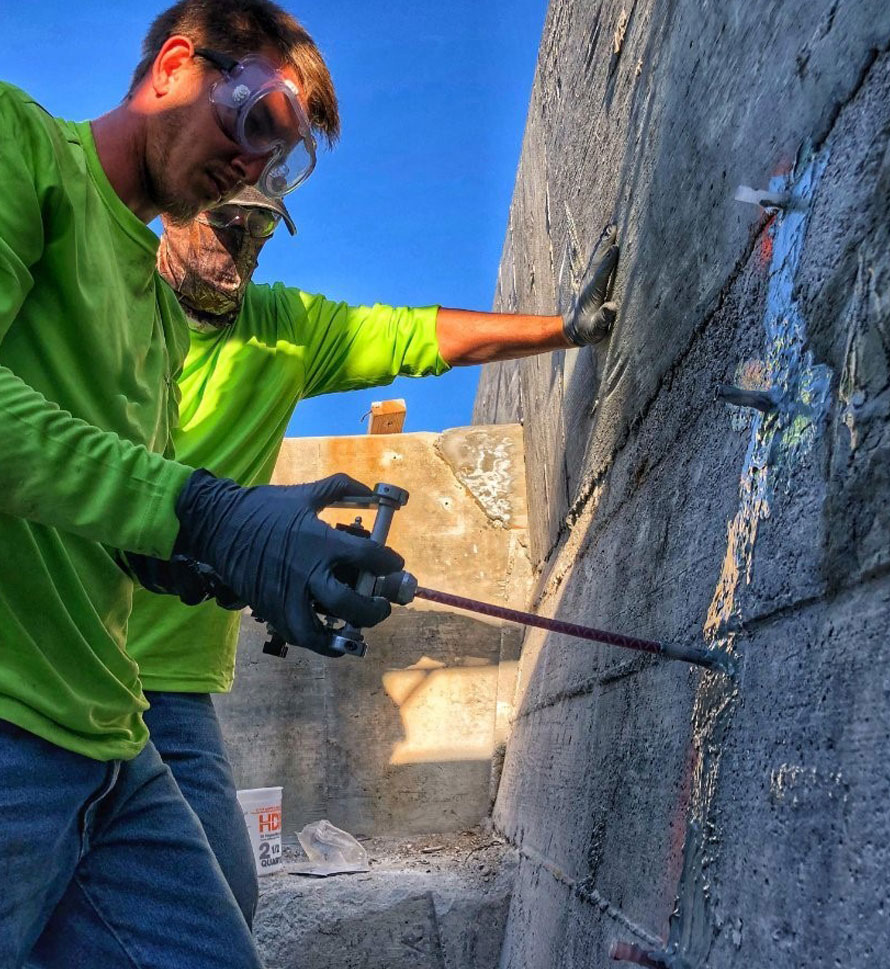
-
Soil Improvement
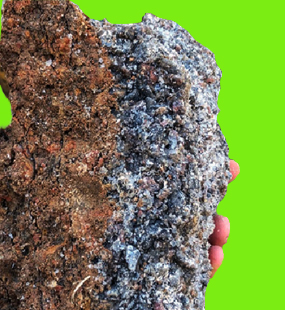
- Soil Stabilization
- Slab Lifting
- Structural Repair / Bonding & Anchoring
- Pumps
- Dispense Guns & Applicators
-
Turnkey Trailer Rig
Are you ready to hit the ground running doing concrete leveling with polyurethane foam? Prime Resins offers the industry’s best suite of products for lifting concrete as a turnkey, fully equipped trailer rig.
Read More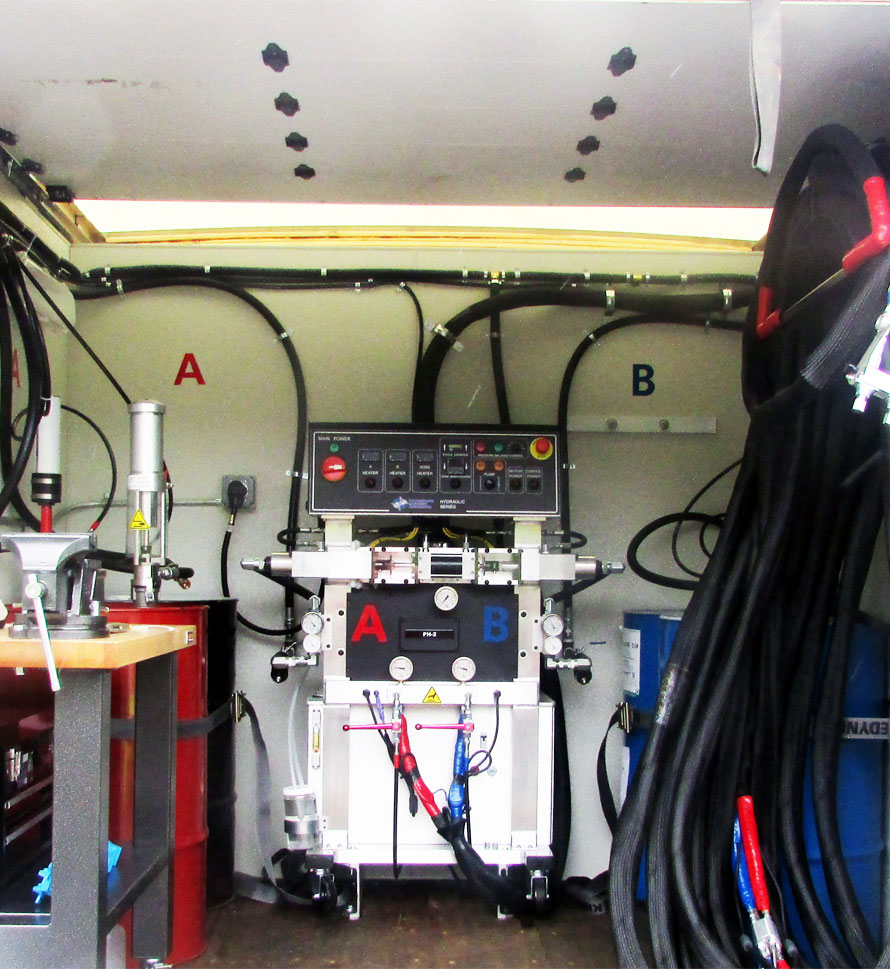
-
Accessories (General)
- 3/4" expendable drive point
- 3/8" and 3/4" soil probes
- Cartridge / Port Connectors and Mixers
- Conduit Seal Kit
- Eco Flush
- F Valve
- Flush Wand
- Grout Needle Kit
- High Pressure Control Valve
- High Pressure Mechanical Ports
- Kick Fast
- Low Pressure Plastic Ports
- PR11 TEA (used w/ PR10 ACLM)
- PR12 APSF catalyst (used w/ PR10 ACLM)
- PR17 LYTX
- Prime Kat
- Prime Plug
- Prime Solvent CGC
- Oakum
- Soil pipe jack
- Stainless Steel Grout Needle & Kit
- StainShield
- Wall Stinger Nozzle
-
Soil Grouting Accessories
- Pipe Coupler
- Pipe Coupler Ferrule
- Buttonhead Coupler - Straight
- Buttonhead Fittings
- SG 3/4" Expendable Drive Tip
- SG 3/4 Rod - 39" Base
- SG 3/4 Rod - 39" Connector
- SG 3/4 Rod - 19.5" Base
- SG 3/4 Rod - 19.5" Connector
- SG 3/4 Fitting - Pipe to Buttonhead
- SG 3/4 Fitting - Buttonhead Fitting
- IL 1/2" Drive Point
- IL 1/2" rod - 39" base
- IL 1/2" rod - 39" connector
- IL 1/2" Fitting Buttonhead
- SG 3/4" Fitting - Buttonhead Coupler
- SG 3/4" Slotted Drive Tip
- SG 3/4 Drive Head
- Modified Pipe Jack Soil Grouting
- SG 3/4 Fitting - Buttonhead Coupler
- Pagani DPM30 Penetrometer
- IL 1/2" Fitting - Buttonhead to Connector Rod
- IL 1/2" Rod to Rod Coupler Fitting
- High Pressure Flow Control Valve
- Buttonhead Coupler - 90°
- Buttonhead Clamp Kit
- DPM30 Penetrometers
- JackJaw Soil Probe Extractor
- Floor & Joint Repair
- Waterproofing & Secondary Containment
-
Leak Repair
- News
- Downloads
-
Tools
-
Case Studies
Prime Resins takes pride in its ability to find the right solutions to the problems facing our customers. Here are some examples of customers’ successful jobs:
Read More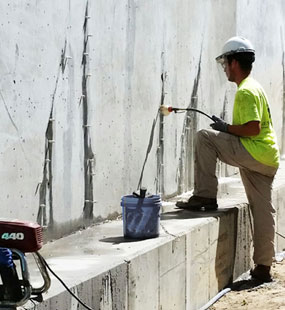
-
Prime Practices
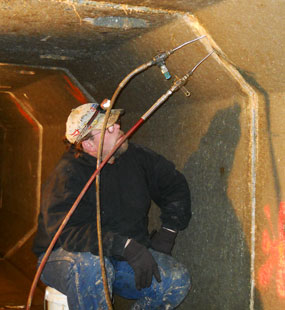
-
Videos

-
Estimating Tools & Info.

-
Why us?
The superior quality of products at a fair price, our consultative approach, and our unparalleled technical support set Prime Resins apart. Learn more about the Prime difference.
Read More
-
Product Types & Typical Uses
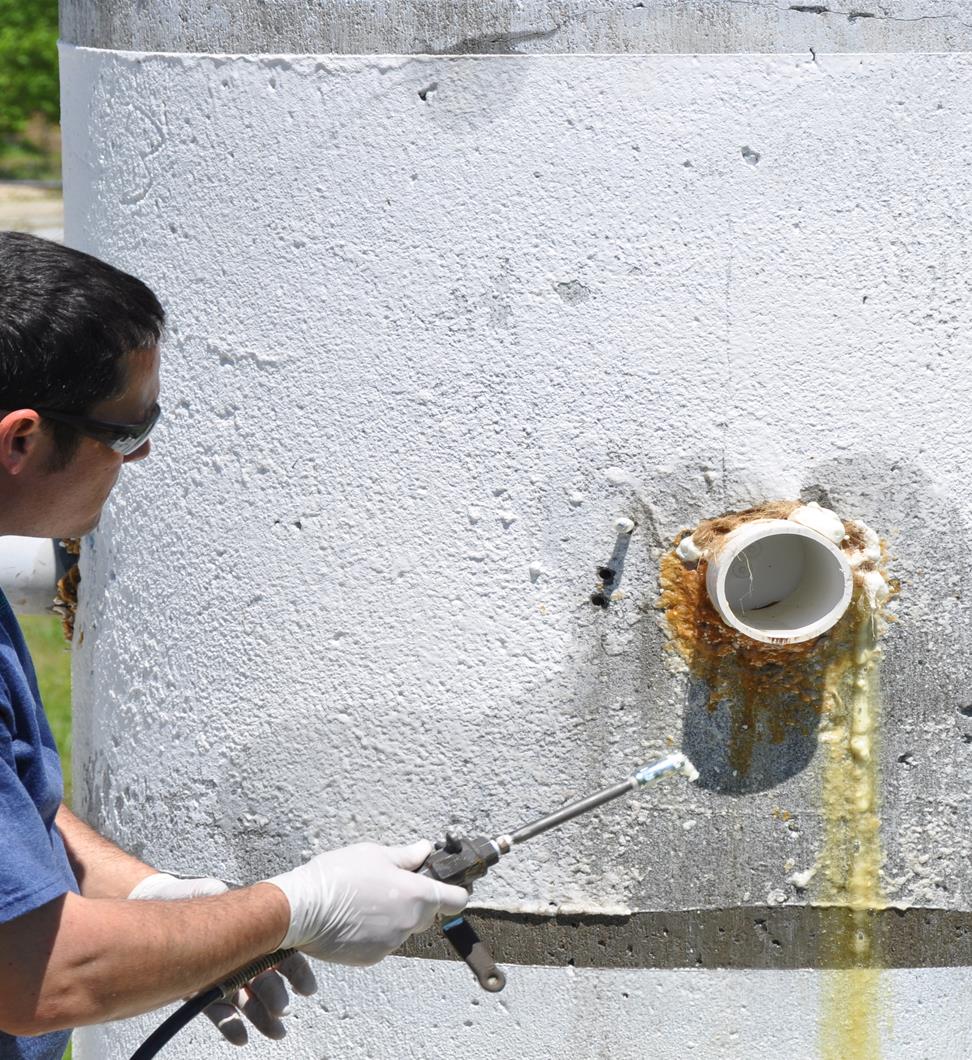
-
Looking for a contractor?
-
Certifications
-
Case Studies
- Contact
Case Studies- Slab Lifting Pages
Lifting a radiant heated concrete floor with Precision Lift
Contractor: Manicured Concrete Solutions, Edmonton, Alberta
Client: Private homeowner, Edmonton
Problem: Manicured Concrete Solutions was called in to lift the basement floor of a home high on the banks of the North Saskatchewan River in Edmonton. The floor is a floating concrete slab with hardwood on top of it. Inside the slab are radiant heating elements. An approximately 33’ (10m) section of the basement had settled ½” to ¾” (1.5-2 cm) from the baseboard. The floor needed to be lifted back into a level position.
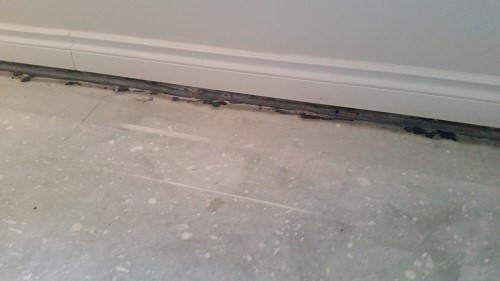
Solution: Manicured Concrete Solutions uses the Prime Resins Revolution compact slab lifting system to fill voids and lift concrete with Precision Lift polyurethane structural foam. Foam is injected through dime-sized holes drilled through the concrete. Owner Richard Ross brought the Revolution into the basement to do the lifting. The unit is designed to fit through a standard doorway, making it the only truly portable system on the market.
Challenge: Given the radiant heat system embedded in the floor, injection hole placement was crucial. “The biggest concern was making sure we didn’t hit the in-floor heating, says Ross. “We used a reliable, experienced third party to survey the floor with ground penetrating radar and thermal imaging to ensure we could identify where all the lines were located.” Given the complexity of the situation, Ross engaged on-site technical support from Prime Resins.
Process:
- Ross marked the grid of the hole pattern on the floor.
- After the holes were drilled, they used fiberglass probes to assess the voids. The GPR identified the area of the void, but couldn’t tell the precise dimensions because the wire mesh and the heating elements inside the concrete obstructed the readings. There was a 2-6” (5-15 cm) void below the concrete. It appears that melting snow and rain are migrating under the house, which the homeowner will need to address to avoid further erosion.
- Next they assessed the soil conditions, which turned out to be very soft. The substrate is so soft that the probes could be hand-pushed into the ground 24-30” (61-76cm).
- Ross injected Precision Lift 2135 through the drill holes.
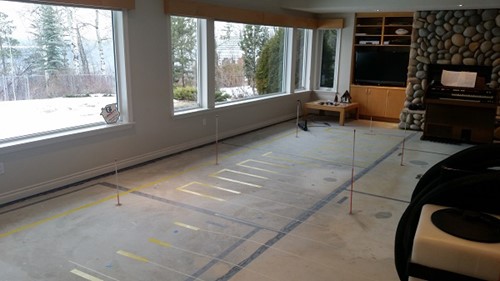
The heating elements were marked and probes were used to assess voids and soil conditions. Note how deep the far left probe could be pushed. Image copyright Prime Resins, Inc. Re-use not permitted.
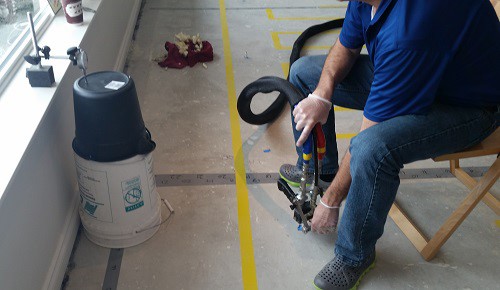
Precision Lift 2135 is injected with the Equalizer gun; lift is monitored with the gauge on the windowsill. Image copyright Prime Resins, Inc. Re-use not permitted.
Outcome: The polyurethane foam compacted the soil, filled the void and successfully lifted the floor back to level. Prior to the GPR and thermal imaging, the hardwood floors had been removed. The homeowner will leave the floor bare for some time in order to monitor the conditions. The radiant heat system had been running for weeks, so the substrate was not frozen, but the ground could settle further. The foam itself will remain intact with no shrinkage, but the ground could settle with the spring thaw and the erosion issues. If further settling occurs, MCS will return to address the problem.
“My biggest fear from a slab raising perspective was that the slab would bind and the homeowner would not have a level floor. Fortunately the job went very well and the homeowner now has a level floor. I was very happy with the outcome of this project,” says Ross.




